A) an increase in demand.
B) a decrease in equilibrium price.
C) a decrease in equilibrium quantity.
D) an increase in equilibrium quantity.
Correct Answer

verified
Correct Answer
verified
Multiple Choice
Use the following figure to answer the question :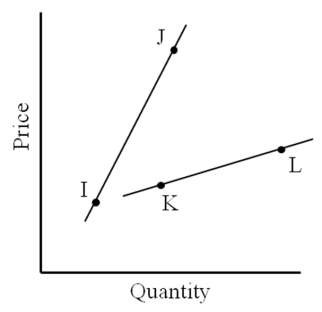 -A move from I to J represents a
-A move from I to J represents a
A) change in quantity supplied
B) change in supply
C) increase in supply
D) decrease in supply
Correct Answer

verified
Correct Answer
verified
Multiple Choice
The demand for a normal good is
A) indirectly (negatively) related to the supply of the good.
B) directly (positively) related to income.
C) unaffected by changes in consumer tastes and preferences.
D) unaffected by changes in the prices of complementary goods.
Correct Answer

verified
Correct Answer
verified
Multiple Choice
A change in the demand for automobiles may be caused by a ______________.
A) change in the price of gasoline
B) change in income
C) change in tastes and preferences
D) All of the choices.
Correct Answer

verified
Correct Answer
verified
Multiple Choice
Use the following figure to answer the question :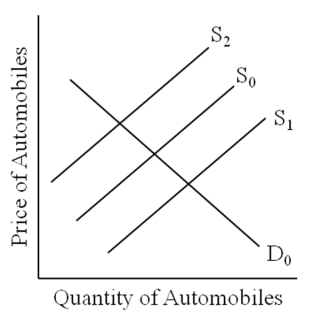 -Assume the economy begins at the intersection of D0 S0. Suppose that robots were introduced on the auto assembly line. How would this affect the supply curve?
-Assume the economy begins at the intersection of D0 S0. Suppose that robots were introduced on the auto assembly line. How would this affect the supply curve?
A) Move along S0.
B) Shift to S1.
C) Shift to S2.
D) No change
Correct Answer

verified
Correct Answer
verified
Multiple Choice
If beans are an inferior good, a decrease in income will
A) cause rice to sell at a lower price.
B) increase the production of rice.
C) shift the demand curve for rice to the left.
D) shift the demand curve for rice to the right.
Correct Answer

verified
Correct Answer
verified
Multiple Choice
Which of the following can cause a change in supply?
A) Changes in demand
B) Changes in the number of buyers
C) Changes in tastes and preferences
D) Changes in the price of the good or service
E) Technological advance
Correct Answer

verified
Correct Answer
verified
Multiple Choice
As income falls, the demand for normal goods ____ and the demand for inferior goods ___.
A) falls; falls
B) rises; rises
C) falls; rises
D) rises; falls
Correct Answer

verified
Correct Answer
verified
Multiple Choice
Use the following figure to answer the question :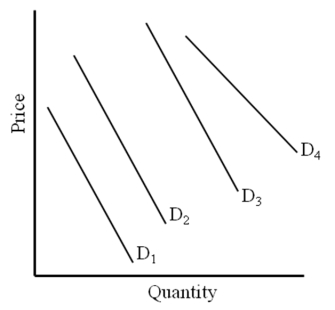 -The market demand curve for most goods and services is
-The market demand curve for most goods and services is
A) the horizontal summation of individual demand curves.
B) calculated by multiplying all individual demand curves by each other.
C) not important for most analytical purposes.
D) not related in any way to individual demand curves.
Correct Answer

verified
Correct Answer
verified
Multiple Choice
If Pepsi increases its prices which of the following would NOT happen?
A) The demand for Pepsi would drop.
B) The quantity demanded of Pepsi would drop.
C) The demand for Coke would increase.
D) The equilibrium price of Coke would rise.
E) The equilibrium quantity of Coke would rise.
Correct Answer

verified
Correct Answer
verified
Multiple Choice
What happens to equilibrium price when simultaneously demand increases and supply decreases?
A) Equilibrium price will increase.
B) Equilibrium price will decrease.
C) Equilibrium price will remain the same.
D) Equilibrium price may increase, decrease, or remain the same depending on the magnitude of the shifts in demand and supply.
Correct Answer

verified
Correct Answer
verified
Multiple Choice
A decrease in the demand for a service means that the
A) demand curve shifts to the right.
B) demand curve shifts to the left.
C) supply curve shifts to the right.
D) supply curve shifts to the left.
Correct Answer

verified
Correct Answer
verified
Multiple Choice
When the representatives of the OPEC countries met in March 1999 and decided to reduce the amount of oil each country would produce, the result was
A) the world demand for oil fell.
B) the world supply of oil fell.
C) the price of oil fell.
D) All of the choices were results of this meeting.
Correct Answer

verified
Correct Answer
verified
Short Answer
A change in consumer taste will prompt a change in ____________.
Correct Answer

verified
Correct Answer
verified
Multiple Choice
As the price of an item goes up, the quantity demanded
A) rises.
B) falls.
C) remains the same.
Correct Answer

verified
Correct Answer
verified
Multiple Choice
Use the following figure to answer the question :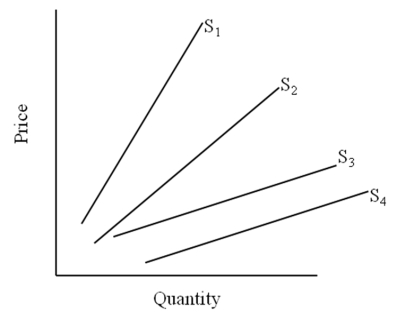 -A move from S1 to S2 is a(n)
-A move from S1 to S2 is a(n)
A) an increase in quantity supplied.
B) a decrease in quantity supplied.
C) an increase in supply.
D) a decrease in supply.
Correct Answer

verified
Correct Answer
verified
Multiple Choice
The effect on the market for heating oil of a leftward shift of supply would be
A) a shortage of heating oil.
B) a surplus of heating oil.
C) a decrease in the quantity of heating oil sold and in its price.
D) an increase in the price of heating oil and a decrease in the quantity sold.
Correct Answer

verified
Correct Answer
verified
Multiple Choice
An increase in the price of gasoline will cause a
A) decline in the quantity demanded for gasoline.
B) increase in the quantity demanded for gasoline.
C) decline in the demand for gasoline.
D) increase in the demand for gasoline.
Correct Answer

verified
Correct Answer
verified
Essay
In the space provided in the graph above, draw a demand curve, D1 and then draw a second demand curve, D2, that illustrates an increase in demand. 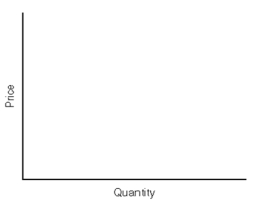
Correct Answer

verified
Correct Answer
verified
Multiple Choice
An increase in the price of fabric (an input in the production of pants) will tend to
A) decrease the demand for pants.
B) cause a movement along the supply curve for pants.
C) decrease the supply of pants.
D) increase the supply of pants.
Correct Answer

verified
Correct Answer
verified
Showing 201 - 220 of 227
Related Exams